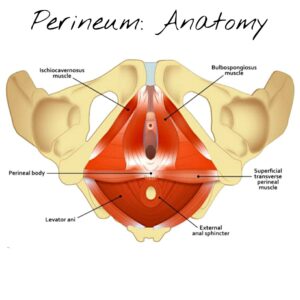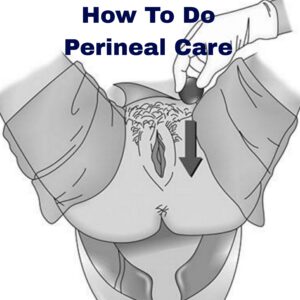Perineal care is an important aspect of prenatal and postnatal health for women. The perineum is the area between the vagina and the anus, and it undergoes significant changes during pregnancy and childbirth.
Proper perineal care during pregnancy can help prepare the area for delivery, while postpartum perineal care can help promote healing and reduce the risk of infection.
This article will provide essential information on perineal care, including tips for perineal massage, pain management, postpartum hygiene, and when to seek medical attention for any issues that may arise.
Table of Contents
Understanding Perineal Care
What is the Perineum?

The perineum is the area between the anus and the vulva in women. It includes the skin, muscles, and tissues that support the bladder, uterus, and rectum. During childbirth, the perineum stretches and may tear, leading to pain and discomfort. Proper perineal care is crucial to promote healing and reduce the risk of infection.
Why is Perineal Care Important?
Perineal care is essential for maintaining good hygiene and preventing infections after childbirth. The perineum is susceptible to tears, bruises, and swelling during childbirth, making it more susceptible to bacterial infections. Neglecting perineal care can lead to post-delivery complications like infections, pain, discomfort, and slow healing.
Indications for Perineal Care
1. Postpartum patients especially suture in the perineum
2. Persons with surgery on the genitourinary tract
3. Persons with lesions, ulcers, or surgery on the perineal area or rectum
4. Female patients having an indwelling catheter
5. Patients having excessive vaginal discharges
6. Patients with incontinence of urine or stool
7. Patients should not perform perineal care herself
Purposes of Perineal Care
1. To clean the skin and mucous membrane of the vulva and perineum
2. To eliminate bacterial growth by applying antiseptic solutions
3. To increase the healing of perineal tissues
4. To relieve itching, pain, and discomfort of the perineum
5. To prevent infection of the genital area
6. To minimize the pain, tenderness, and edema due to the operational trauma after episiotomy
7. To observe the color, nature, and characteristics of lochia
Perineal Care During Pregnancy
The Role of Perineal Massage
Perineal massage is a technique used to stretch and relax the perineal tissues before childbirth. This massage can help to prevent tears and reduce the need for an episiotomy, a surgical incision made to enlarge the vaginal opening.
Perineal massage involves using the fingers to apply gentle pressure and massage the area around the vaginal opening. This message should begin around 34 weeks of pregnancy and can be done by an expecting mother or her partner.
Using Warm Compresses to Prepare the Perineum
Warm compresses can help to relax the perineal muscles and increase blood flow, which can reduce the risk of tearing during childbirth. A warm compress can be applied to the perineal area a few times a day during the last few weeks of pregnancy. You can use a warm cloth or a pre-made perineal pack that can be heated in a microwave.
Preparing for Vaginal Delivery
Strengthening the Perineal Muscles
Perineal exercises, also known as Kegel exercises, can strengthen the pelvic floor muscles and reduce the risk of tearing during childbirth. These exercises involve contracting and relaxing the muscles that support the uterus, bladder, and rectum. Perineal exercises are easy to do and can be done anywhere, anytime.
Preparing for Episiotomy
In some cases, an episiotomy may be necessary to facilitate delivery. An episiotomy is a surgical cut made in the perineal area to widen the vaginal opening. Women can prepare for an episiotomy by discussing their concerns with their healthcare provider and asking questions about the procedure.
Understanding the risks and benefits of an episiotomy can help women make informed decisions about their childbirth.
Postpartum Perineal Care
Caring for the Perineal Area After Vaginal Delivery
After a vaginal delivery, the perineal area needs special attention to promote healing and reduce the risk of infection. Regular perineal care involves cleaning the area with warm water and mild soap, changing sanitary pads frequently, and using a squirt bottle to rinse the area after urination or bowel movements. Avoid using tampons, douches, or other products that may irritate the area.

Steps of Postpartum Perineal Care
1. Explain the procedure to the patient
2. Spread the mackintosh and draw sheet under the buttocks
3. Pour antiseptic lotion into the bowl
4. Wash your hands
5. Wear sterile gloves
6. Holding the perineal pad, or dressings with the artery forceps and observe the characteristics of secretion, lochia, amount, and odor, and discard the soiled pad
7. Hold the swab with the swab holder
8. Clean the perineum with a sterile wet swab from upward to downwards
9. First clean the stitches, then other areas
10. Clean the vulva and perineum with each sponge once only from upward to downwards making as little pressure as possible on the tissue work from the midline to outwards
11. Inspect the suture site for infection
12. Turn the patient on one side
13. Apply antibiotic ointment
14. Apply the dressings and avoid touching the surface of dressings that comes in contact with the vulva and perineum
15. Apply dressings, cotton pad, and ‘T’ Bandage
Managing Pain and Discomfort
Pain and discomfort in the perineal area are common after delivery, especially if there was tearing or an episiotomy. Women can manage their pain by using ice packs, taking pain medications prescribed by their healthcare provider, and using a sitz bath to soothe the area.
A sitz bath is a basin filled with warm water that can be placed over a toilet seat, allowing the perineal area to soak in the water. Women may also benefit from pelvic floor physical therapy to help regain strength and flexibility in the perineal area.
Managing Perineal Pain and Discomfort
Pregnancy and childbirth can be tough on the body, especially the perineum. The perineum is the area between the vagina and the anus, and it can become sore and tender during pregnancy and after vaginal delivery. To alleviate perineal pain and discomfort, there are several things you can do.
Over-the-Counter Pain Relief Options
Over-the-counter pain relief options such as ibuprofen or acetaminophen can be taken to manage perineal pain. Always talk to your doctor or midwife before taking any medication.
Using Ice Packs and Sitz Baths
Ice packs and sitz baths can also provide relief for perineal pain and discomfort. To use an ice pack, wrap it in a cloth and apply it to the perineal area for 20 minutes at a time. Sitz baths involve sitting in a shallow, warm bath for 10 to 15 minutes, two to three times a day. Adding a tablespoon of Epsom salt to the water can also help soothe the area.
Perineal Hygiene Tips for New Moms
Perineal hygiene is important for new moms to prevent infection and promote healing after delivery. Here are some helpful tips for keeping the perineal area clean and comfortable.
Cleaning the Perineal Area
When cleaning the perineal area, use a gentle cleanser and warm water. Be sure to pat the area dry with a clean towel after washing. Avoid using harsh soaps or rubbing the area vigorously.
Choosing the Right Underwear
Choosing the right underwear is also important for perineal health. Choose breathable cotton underwear and avoid tight-fitting clothing that can irritate the area. Some women also find using maternity pads or adult diapers helpful in the immediate postpartum period.
Seeking Medical Attention for Perineal Issues
While perineal pain and discomfort can be normal after childbirth, it’s important to recognize when there may be an issue that requires medical attention.
Signs and Symptoms of Perineal Problems
Signs and symptoms of perineal issues can include severe pain, swelling, redness, or discharge from the area. These symptoms may be indicative of an infection or other problem and should be addressed by a healthcare provider.
When to Contact Your Doctor
If you are experiencing any concerning symptoms or are unsure if what you’re experiencing is normal, contact your healthcare provider. They can provide guidance and support to help you navigate any issues you may be experiencing.
In conclusion, perineal care is an essential aspect of maternal health that should not be overlooked. By following the tips and recommendations provided in this article, expectant and new mothers can take proactive steps to promote perineal health and reduce the risk of complications.
Remember to always consult with your healthcare provider if you have any concerns or experience any issues with your perineal area.
Frequently Asked Questions (FAQ)
When should I start perineal massage during pregnancy?
Perineal massage can start any time after 34 weeks of pregnancy. It is recommended to do it once a day and to continue until delivery.
What can I do to reduce perineal pain and discomfort after delivery?
Some options to reduce perineal pain and discomfort after delivery include using ice packs or sitz baths, taking over-the-counter pain relief options as recommended by your healthcare provider, and resting as much as possible.
When should I contact my healthcare provider if I have concerns about my perineal area?
If you experience excessive bleeding, severe pain, or signs of infection (such as fever, chills, or foul-smelling discharge) it is important to contact your healthcare provider immediately. They can assess your situation and provide appropriate treatment if necessary.
What type of underwear should I wear after delivery?
It is recommended to wear loose-fitting, breathable cotton underwear after delivery. Avoid wearing thongs or tight-fitting underwear, as it can irritate the perineal area and slow down the healing process.
You May Also Like
- NVS Staff Nurse Vacancy 2024 – How to Apply
- AIIMS NORCET 6 and ESIC Nursing Exam Questions and Answers
- ESIC Nursing Officer Recruitment 2024 | 1930 Vacancies – Apply Now
- Dream Job Alert: AIIMS NORCET Nursing Officer Vacancy 2024 – Apply Now!
- NIMHANS Nursing Officer Exam 17-12-2023 Memory-Based Solved Questions